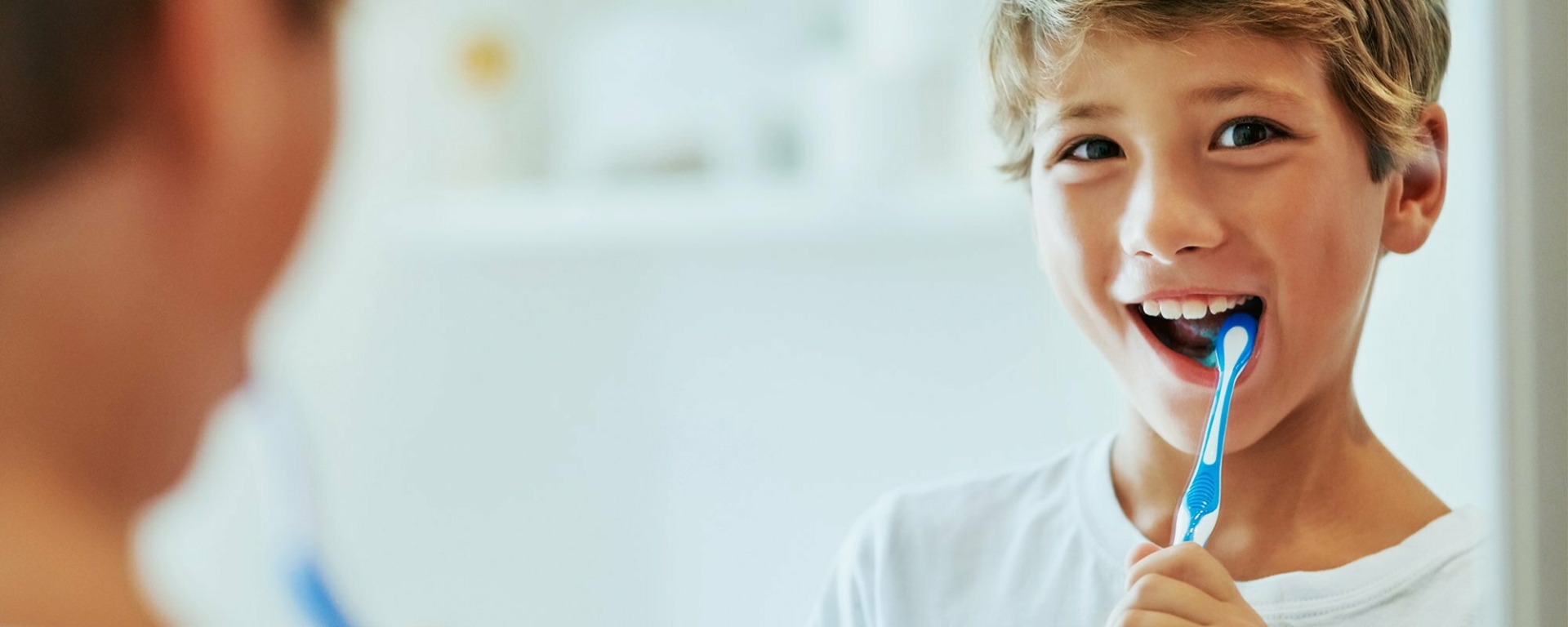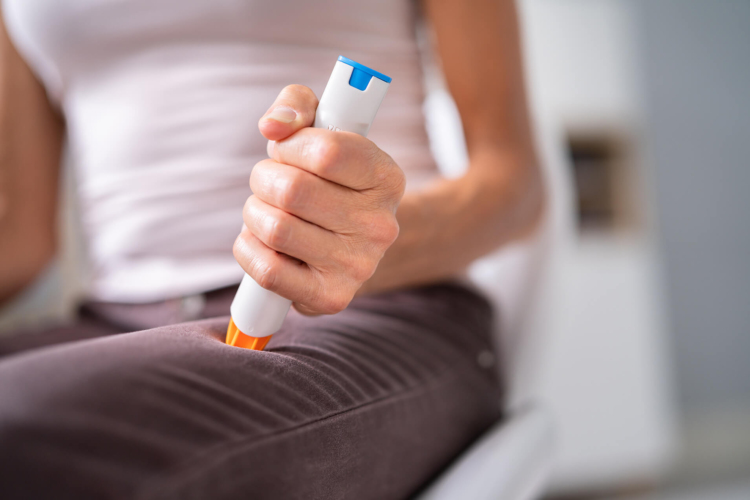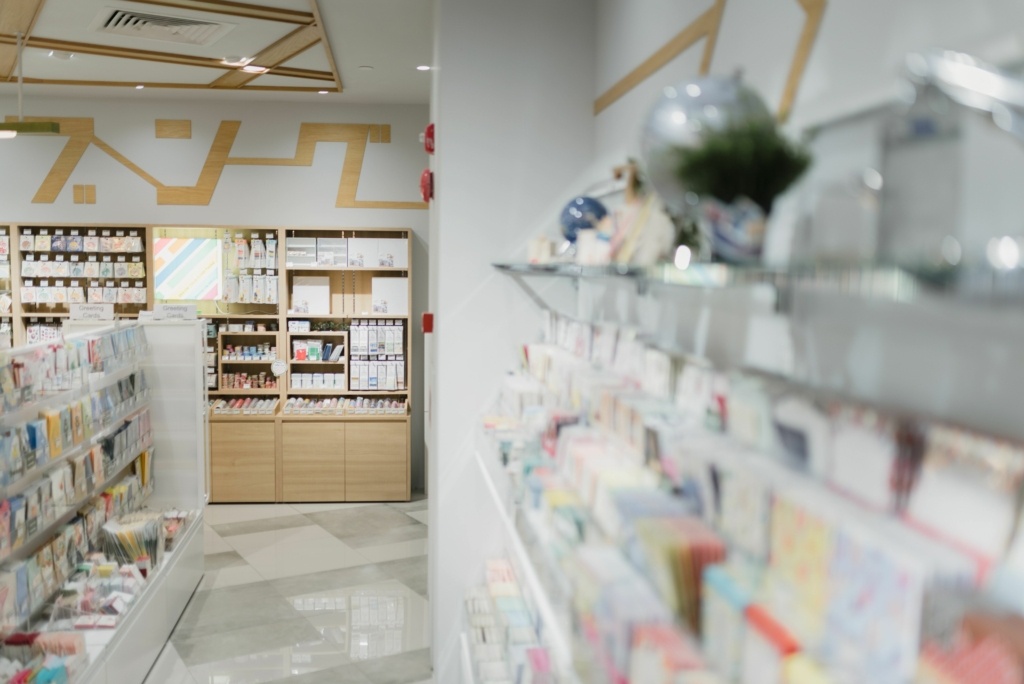Oral and dental health, hygiene and cavity prevention from age 0 to 9
Teeth brushing in children is no small task! It’s an activity that most littles ones seem to want to avoid at all costs, which can lead to a veritable struggle for parents.
By establishing healthy habits at a very early age, you’ll be giving your child the best possible chance of developing nice, healthy teeth, a harmonious face and strong self-esteem.
We’ll be brushing on everything you need to know to take the best possible care of your child’s teeth as they grow, including some tricks that will help make teeth brushing more pleasant and motivating.
Early childhood cavities mean serious business
Early childhood tooth decay is caused by food residue inside the mouth, such as milk, juice, breastmilk and drinks other than water.
Sugars present in food and drinks, combined with bacteria contained in dental plaque form an acid that is damaging to tooth enamel. The longer food and drinks remain inside a child’s mouth, the higher the risk of developing tooth decay.
The proliferation of tooth decay can be devastating, and the pain it causes can be harmful to sleep, eating and growth, and it can even lead to speech difficulties that can slow the pace of learning to speak. Baby teeth infections can also spread to adult teeth buds, which can damage them or cause malformations.
Did you know?
|
Dental hygiene products for infants and children
It is important to use dental hygiene products that are suited to your child’s stage of development. These products are designed with their little mouths in minds, for their specific needs and are readily available in pharmacies.
How to choose a child’s toothbrush
Select a soft-bristled brush, making sure its size is appropriate for your child’s mouth. Check the ages indicated on packages and use your common sense, as you are most familiar with your child’s mouth.
A manual toothbrush (combined with tooth floss) is more than enough to provide adequate dental hygiene, but a mechanical toothbrush can make the task easier and motivate your child. Mechanical toothbrushes allow for easier cleaning of crevasses on chewing surfaces.
When to change my child’s toothbrush
Replace your child’s toothbrush every three months or as soon as bristles become curved or flattened from use. Furthermore, following a high fever or a contagious disease, contaminated toothbrushes must be changed.
At what age to start flossing teeth
Tooth flossing must be initiated as soon as your child’s teeth grow closer and are touching, no matter your child’s age. Small floss wands can make the task easier for children and adults alike.
What children’s toothpaste to chooseà
Until a child learns how to spit during teeth brushing, it is not recommended to use toothpaste. Otherwise, only fluoride-free toothpaste should be used.
As soon as your child can spit, it is safe to use children’s fluoride toothpaste as it constitutes the best option for preventing cavities. There are flavours available to please children’s taste buds, and fluoride concentration levels are age-appropriate.
Fluoride: why it must not be swallowedJust like calcium, fluoride is a natural component of teeth and bones. However, when ingested in excessive quantities, fluoride can lead to dental fluorosis, a benign condition that can cause small white spots to appear on teeth. |
Children’s mouthwash: is it necessary?
Careful brushing and flossing of the teeth are sufficient for excellent dental hygiene. Mouthwash can serve as a complement, but it is not enough on its own and is not essential.
Dental hygiene in children
Your child’s oral and dental hygiene routine should be practiced twice a day. A minimum of two minutes should be spent on brushing one’s teeth, gums and tongue, in addition to the time it takes to floss, as the case may be.
How to clean a baby’s or toddler’s teeth
For the sake of comfort and efficacy, try one of the following positions:
- Facing the bathroom mirror, your child leaning with their back to you. That way your arms and hands will be in the natural teeth brushing position.
- Your child sitting on your knees or on the bathroom counter.
- Seated on the floor or a couch, with your child’s head in your lap.
0 to 6 months
Gently wipe your baby’s gums using a clean, humid washcloth. As soon as teeth appear, start brushing them. Toothpaste is not required.
6 to 12 months
As of 6 months, if your child is at risk of developing tooth decay, use a hint of fluoride toothpaste, or even a paper-thin quantity.
1 to 3 years
Use the equivalent of a grain of rice of fluoride toothpaste as soon as your child can properly spit it out.
3 to 4 years
You may now use a pea-sized quantity of fluoride toothpaste.
Encourage your child to brush their teeth alone, helping them at the end of the process in order to make sure their teeth are nice and clean.
If your child’s teeth are close together, introduce them to flossing. Every second time, floss your child’s teeth yourself in order to make sure they are properly clean.
How to teach a 5 to 9 year old child to brush their teeth
Your child can learn to brush their teeth as soon as they can write their own name. Writing their own name means they have developed sufficient manual dexterity.
At around 6 years of age is when a child’s first 4 permanent molars come in. They must be brushed very carefully, because they play a key role in adult teeth. At this stage, spread a length of about 0.5 to 1 cm of toothpaste on your child’s brush.
Keep encouraging your child to floss their teeth and to develop autonomy, making sure that brushing their tongue is a part of their daily oral hygiene routine.
A parent’s supervision continues to be required, in order to make sure that your child is not swallowing fluoride toothpaste and that they are properly brushing their teeth.
Traps to avoid in order to prevent children’s tooth decay
Cavities are caused by bacteria, which makes them an infectious disease! To avoid spreading to your child microorganisms that lead to tooth decay:
- Do not kiss your child on the mouth. Kiss them on the cheek, nose or forehead instead.
- Do not place your child’s pacifier in your mouth.
- Do not share toothbrushes. Rinse them well after each use and allow them to air dry without touching each other.
- Do not share utensils.
- Do not blow on your child’s food. Simply allow it to cool.
Avoid feeding bacteria by leaving food or liquid residue other than water in your child’s mouth for a long time. Specifically:
- Do not let your child go to bed with their bottle or a sippy cup containing milk or juice.
- After your child has brushed their teeth, do not give them anything except water.
- Most children’s medication contains a lot of sugar. Rinse your child’s mouth and clean their teeth after giving them any.
Did you know?During sleep, the mouth produces less acid-neutralizing saliva, which explains the importance of brushing one’s teeth in the evening. |
5 tips for making teeth brushing pleasant and fun
Below are some ideas to help make your life a little easier!
- Include your child when choosing their toothbrush and toothpaste, trying out various flavours.
- If you child seems interested, you could try out a mechanical toothbrush.
- Set a good example by brushing your teeth at the same time as your child.
- Use an hourglass or play a song that lasts about 2 minutes while your child brushes their teeth.
- Congratulate your child and reward their efforts, e.g., via a teeth brushing calendar with stickers.
3 further tips for your child’s oral and dental health
- Give your child foods that promote oral health, such as fresh fruits and vegetables as well as firm cheeses.
- Examine your child’s mouth regularly and see the dentist if you notice stained cracks or stains that are white, chalky or brown.
- See the dentist regularly as of 6 months following the appearance of your child’s first tooth, or as of 1 year of age.
Did you know?Rich in calcium, certain cheeses prevent cavities by reducing the acidity of saliva and slowing bacterial activity. |
Always here for you
Your child’s well-being is of utmost importance to you, of course. However, even parents with the best of intentions sometimes forget that they grow up so fast that it is easy to lose track of what they need at each stage of their development.
Whatever your questions may be regarding your children’s health, your pharmacist affiliated with Accès pharma is there to advise you. To avoid wait times or to request a virtual appointment, use our online appointment booking service.





